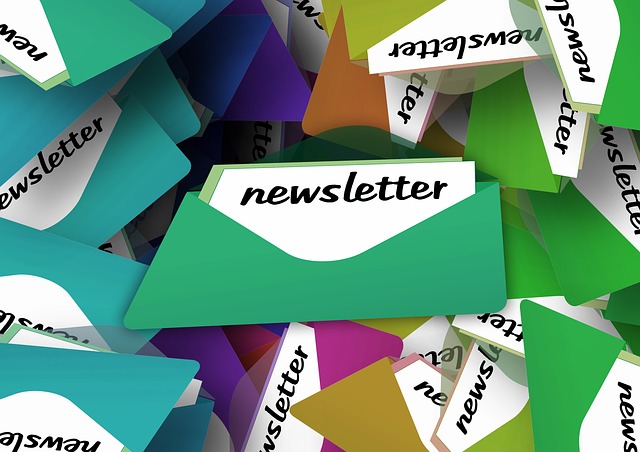Step into the realm of email marketing, where subject lines serve as the gatekeepers to your audience’s attention.
Like a skilled magician, you must captivate, intrigue, and compel with just a few words.
But fear not, for within the realm of subject lines lies a powerful secret weapon: emotional triggers.
These hidden gems possess the ability to tug at heartstrings, ignite curiosity, and prompt action.
They hold the key to unlocking the true potential of your email campaigns.
Just imagine, your subject line acting as a magnetic force, drawing readers in, eager to discover what lies within the confines of your message.
With the right emotions, evocative language, and a touch of personalization, you can craft subject lines that resonate deeply with your audience.
So, step into this enchanting world as we unravel the mysteries and unleash the power of emotional triggers in email subject lines.
Prepare to witness your open rates soar and engagement levels skyrocket.
Key Takeaways
- Understanding the importance of email subject lines in email marketing
- Utilizing emotional triggers to engage and captivate the target audience
- Implementing personalization tactics to strengthen the connection with the audience
- Conducting A/B testing and analyzing data to optimize subject lines and improve open rates.
Understand the Importance of Emotional Triggers in Email Marketing
You need to understand the importance of emotional triggers in email marketing if you want to truly captivate your audience and drive them to take action.
The psychology of emotional triggers in email subject lines is a powerful tool that can make or break your marketing campaign. By creating an emotional connection with your audience, you can instill a sense of trust and loyalty, ultimately leading to increased engagement and conversions.
Emotions have the power to evoke strong responses, and when used strategically in your subject lines, they can grab your audience’s attention and compel them to open your emails. However, it’s crucial to choose the right emotions for your audience.
In the next section, we will explore how to effectively tap into the emotions that resonate with your specific target market.
Choose the Right Emotions for Your Audience
When it comes to email marketing, understanding your target audience is crucial.nnBy researching your audience, you can gain insights into their preferences, interests, and needs.nnThis knowledge will help you identify the emotions that resonate with them, allowing you to craft subject lines and content that truly connect and engage with your audience.
Researching your target audience
Before diving into crafting the perfect email subject line, consider researching your target audience to uncover the emotional triggers that’ll grab their attention. Understanding psychological influences and effective communication strategies is key to connecting with your audience on a deeper level.
Start by analyzing their demographics, interests, and behaviors. Look for patterns and commonalities that can help you identify their needs and desires. Use surveys, interviews, and social media analytics to gather valuable insights.
Once you’ve got a clear understanding of your audience, you can tailor your subject lines to speak directly to their emotions. By tapping into what resonates with them, you can increase the chances of your emails being opened and engaged with.
So, let’s move on to the next section and explore how to identify emotions that’ll truly connect with your audience.
Identifying emotions that resonate with your audience
To truly connect with your audience, it’s important to identify the emotions that deeply resonate with them. Understanding audience psychology and emotional triggers in branding can help you create email subject lines that grab attention and compel your readers to open and engage with your message. Here is a table to help you identify the emotions that resonate with your audience:
| Emotion | Description |
|---|---|
| Excitement | Creating anticipation and curiosity |
| Fear | Highlighting potential problems or solutions |
| Trust | Building credibility and reliability |
| Happiness | Promoting positive experiences and joy |
| Urgency | Creating a sense of time sensitivity |
By tapping into these emotions, you can craft subject lines that evoke a strong emotional response and increase the likelihood of your audience taking action. Now, let’s explore how to use powerful and evocative language to further captivate your readers.
Use Powerful and Evocative Language
Are you looking to make your email subject lines stand out and grab your audience’s attention?nnOne way to do this is by using powerful and evocative language that resonates with your readers.nnBy carefully choosing impactful words and phrases, you can create a sense of urgency or exclusivity that compels your audience to open and engage with your emails.nnSo, why wait?nnStart crafting subject lines that pack a punch and watch your open rates soar.
Choosing impactful words and phrases
Imagine the impact you can create by incorporating impactful words and phrases into your email subject lines, instantly captivating your readers. To evoke an emotional response, consider using the following numeric list:
-
‘Irresistible’ – Make your readers feel like they can’t resist opening your email.
-
‘Exclusive offer’ – Create a sense of exclusivity and make your readers feel special.
-
‘Limited time’ – Instill a sense of urgency, compelling your readers to act quickly.
-
‘Unlock your potential’ – Appeal to your readers’ aspirations and desire for personal growth.
By carefully selecting these powerful words and phrases, you can tap into your readers’ emotions and make them eager to engage with your email.
Now, let’s explore how you can create a sense of urgency or exclusivity in your subject lines to further boost their impact.
Creating a sense of urgency or exclusivity
Get ready to feel a rush of excitement as we uncover how you can add a sense of urgency or exclusivity to your subject lines. Creating a sense of scarcity is a powerful tool that can instantly grab your reader’s attention. By using phrases like ‘limited time offer’ or ‘exclusive access,’ you create a fear of missing out, compelling your audience to act quickly.
Evoking curiosity is another effective technique. Craft subject lines that leave your readers wanting more, such as ‘Unlock the secret to success’ or ‘Discover the hidden gem inside.’ These teasers pique their curiosity and entice them to open your email.
As we move into the next section about personalizing your subject lines, remember that adding urgency and exclusivity is just the first step in creating compelling email campaigns.
Personalize Your Subject Lines
Are you tired of receiving generic and impersonal emails that get lost in the sea of your inbox? Well, it’s time to change that!
Personalizing your subject lines is a powerful way to grab your recipient’s attention and make them feel special. By using their name or personal information, you can instantly create a connection and increase the chances of your email being opened and read.
Additionally, segmenting your audience allows you to send targeted messages that are relevant to their specific needs and interests. So why wait? Start personalizing your subject lines and watch your email engagement soar!
Using recipient’s name or personal information
Tap into the power of emotional triggers by personalizing your email subject lines with the recipient’s name or personal information – it’s a simple yet effective way to make a meaningful connection. When you include the recipient’s name in the subject line, they instantly feel recognized and valued. It shows that you’ve taken the time to understand and acknowledge their individuality.
Moreover, you can take personalization a step further by incorporating their location or recent events. For example, if you know they live in a specific city, you could mention a local event or news story that’s relevant to them. This not only grabs their attention but also creates a sense of familiarity and relevance.
By using personal information in your subject lines, you can establish a stronger connection with your audience and increase the chances of them opening and engaging with your emails.
Now, let’s explore how segmenting your audience allows for even more targeted messaging.
Segmenting your audience for targeted messaging
Utilizing audience segmentation allows for the creation of highly tailored and focused messages, enhancing the effectiveness of your email marketing campaigns. By dividing your audience into specific segments based on demographics, behaviors, or preferences, you can craft personalized email subject lines that resonate with each group.
Segmentation strategies enable you to understand your recipients better and tailor your messaging to meet their individual needs and interests. Whether it’s targeting a specific age group, geographic location, or purchasing behavior, segmentation allows you to deliver relevant content that grabs their attention and compels them to open your emails.
Incorporating personalization tactics, such as referencing their past purchases or previous interactions with your brand, further strengthens the emotional connection and increases the likelihood of engagement.
So, now that you have mastered segmentation, let’s dive into the next step: testing and optimizing your subject lines.
Test and Optimize Your Subject Lines
Ready to take your subject lines to the next level? Conducting A/B testing is a game-changer when it comes to optimizing your email campaigns. By analyzing data and making improvements based on the results, you can fine-tune your subject lines to increase open rates and engagement.
Don’t settle for average subject lines when you can use this powerful strategy to make a real impact on your email marketing success.
Conducting A/B testing
To really gauge the effectiveness of your email subject lines, try conducting A/B testing to see which emotional triggers resonate most with your audience. A/B testing allows you to compare two different subject lines and measure their success in engaging your readers. By conducting effective experiments, you can identify the emotional triggers that generate the highest open rates and click-through rates. To help you get started, here is a table that outlines the key steps to conducting A/B testing:
| Step | Description |
|---|---|
| 1 | Choose a segment of your audience to test on. |
| 2 | Create two versions of your email with different subject lines. |
| 3 | Split your audience into two groups and send each version to one group. |
| 4 | Measure the open rates and click-through rates of each version. |
By analyzing data and making improvements based on the results of your A/B testing, you can optimize your email subject lines to better resonate with your audience’s emotional triggers.
Analyzing data and making improvements
Once you dive into the data and start making improvements based on the results of your A/B testing, you’ll see a flood of insights pouring in. These insights will help you fine-tune your email subject lines to captivate your audience like never before.
Analyzing trends, you’ll uncover what really resonates with your subscribers. Implementing strategies, you’ll experiment with different emotional triggers to see which ones drive the highest open rates.
In this journey, you’ll discover the power of curiosity-inducing subject lines that leave your readers wanting more. You’ll learn how to evoke a sense of urgency that compels them to take action. Plus, you’ll uncover the art of personalization, crafting subject lines that make your subscribers feel seen and valued.
As you navigate this process, it’s important to avoid overusing emotional triggers and maintain a balanced approach to keep your audience engaged and connected.
Avoid Overusing Emotional Triggers
Avoiding overusing emotional triggers can help you craft subject lines that resonate with your audience without overwhelming them. While emotional triggers can be powerful tools in email marketing, it is important to use them ethically and avoid manipulation. By striking a balance between emotional appeal and authenticity, you can create subject lines that grab attention and encourage engagement.
To illustrate the importance of avoiding overuse, consider the following table:
| Overused Emotional Triggers | Result |
|---|---|
| Fear | Anxious recipients, decreased trust |
| Urgency | Sense of pressure, decreased credibility |
| Greed | Perceived manipulation, decreased interest |
| Guilt | Negative emotions, decreased engagement |
By understanding the potential negative impacts of overusing emotional triggers, you can ensure that your subject lines are both ethical and effective. Remember, the goal is to create genuine connections with your audience, not to manipulate or exploit their emotions.
Frequently Asked Questions
How can emotional triggers in email subject lines impact open rates and click-through rates?
Emotional triggers in email subject lines have a powerful impact on customer engagement. By tapping into the psychology behind these triggers, you can boost open rates and click-through rates.
By evoking emotions like curiosity, urgency, or excitement, you can entice recipients to open your emails and take action. These triggers create a sense of personal connection and relevance, making your emails stand out in a crowded inbox.
Harnessing the power of emotional triggers is a game-changer in email marketing.
Are there any specific emotions that are more effective in email subject lines than others?
When it comes to email subject lines, specific emotions can have a significant impact on open rates and click-through rates. The psychology of emotional triggers in email subject lines reveals that certain emotions are more effective than others.
For example, using words that evoke curiosity or urgency can capture the reader’s attention and compel them to open the email. Additionally, emotions like excitement, fear, and joy can create a sense of anticipation and encourage engagement with the email content.
How can I personalize email subject lines to resonate with my target audience?
To effectively personalize email subject lines and resonate with your target audience, employ these strategies.
First, conduct thorough research on your audience’s demographics, interests, and preferences. Use this information to craft subject lines that speak directly to their needs and desires.
Incorporate personalization techniques such as using the recipient’s name or referencing their specific interests.
Additionally, consider segmenting your audience and tailoring subject lines based on their unique characteristics.
By understanding and connecting with your target audience, you’ll increase open rates and engagement.
What are some examples of powerful and evocative language that can be used in email subject lines?
Want to grab your reader’s attention and make them open your email? Use powerful language and evocative phrases in your subject lines.
Words like ‘unleash,’ ‘transform,’ and ‘irresistible’ create a sense of curiosity and excitement.
Craft subject lines that evoke emotions, like ‘Discover the secret to unstoppable success’ or ‘Ignite your passion with our exclusive offer.’
By using these attention-grabbing techniques, you’ll increase your open rates and engage your audience from the get-go.
What are some common mistakes to avoid when using emotional triggers in email subject lines?
When using emotional triggers in email subject lines, it’s crucial to avoid common mistakes. First, don’t be overly dramatic. While a little excitement is good, going overboard can come across as insincere or spammy.
Additionally, using negative emotions can backfire and turn off your recipients. Instead, focus on positive emotions like curiosity, excitement, or joy.
By avoiding these mistakes, you can create subject lines that are engaging, persuasive, and effective in capturing your reader’s attention.
Conclusion
In conclusion, harnessing the power of emotional triggers in your email subject lines can be the key to unlocking the hearts and minds of your audience.
By carefully selecting the right emotions, using evocative language, and personalizing your subject lines, you can create a powerful connection that resonates with your readers.
Remember to test and optimize your subject lines to ensure maximum impact. However, tread lightly and avoid overusing emotional triggers, as they can lose their effectiveness.
So, go forth and captivate your audience with the artistry of emotion. Let your words ignite their souls and forge lasting connections.






